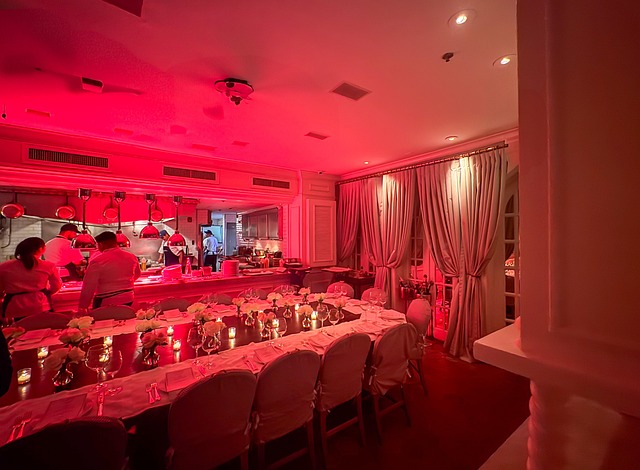In many cultures, a meal can be more than sustenance; it can be an embodiment of faith, community, and reverence. A “fancy dinner”—a carefully curated, elaborate table setting—has historically served as a vehicle for expressing religious devotion. Over centuries, this tradition has evolved, intersecting with evolving social norms and technological advances. This article traces the journey of the fancy dinner from its origins in religious ritual to its contemporary reimagining, illustrating how faith continues to shape communal gatherings.
Historical Roots of the Fancy Dinner
The earliest recorded instances of a fancy dinner in a religious context date back to the Roman Empire, where the Vestal Virgins and other priestesses would host elaborate feasts to honor their deities. These gatherings combined sumptuous dishes with symbolic gestures—like offering a single white loaf to signify purity—creating a tangible link between the sacred and the earthly.
In medieval Europe, monastic communities embraced the concept of the “fancy dinner” as a means of reinforcing spiritual discipline. Priests would orchestrate a formal banquet during major feasts such as Christmas and Easter, where each dish was chosen to reflect a particular biblical lesson. The arrangement of food on the table, the timing of courses, and even the type of wine served were all meticulously planned to mirror the liturgical calendar.
Symbolic Elements in Traditional Fancy Dinners
Several core symbols recur in traditional fancy dinners, regardless of denomination or region:
- White tablecloths and linens—representing purity and the presence of the divine.
- Three courses—mirroring the Holy Trinity in Christian contexts or the three pillars of faith in other traditions.
- Seasonal ingredients—emphasizing God’s stewardship over nature.
“The act of sharing a meal is an act of communion,” remarked a 19th‑century theologian in his diary. “Each course invites the soul to partake in a different aspect of the divine.”
From Ritual to Celebration: The Evolution of Fancy Dinners
As societies modernized, the role of fancy dinners expanded beyond purely religious observance. In the 20th century, churches and mosques began to host community dinners that blended worship with charity, offering a platform for the less fortunate to experience a taste of the “fancy dinner” tradition. These gatherings emphasized inclusivity, turning a sacred ritual into a communal celebration.
During the late 1900s, social media and global communication introduced new flavors to these traditions. A chef in Italy might share a video of a traditional “fancy dinner” preparation, while a religious leader in Kenya could livestream a feast, inviting followers worldwide to participate virtually. These developments have not diminished the spiritual significance of the meal; rather, they have broadened its reach.
Modern Reimaginations of the Fancy Dinner
Today, many religious communities are reinterpreting the fancy dinner to align with contemporary values such as sustainability, inclusivity, and digital engagement. Some of the most striking innovations include:
- Zero‑Waste Kitchens—using locally sourced ingredients and compostable tableware to honor stewardship of creation.
- Multilingual Toasts—encouraging diverse congregations to share blessings in their native languages.
- Virtual Reality Dining Experiences—allowing remote participants to feel as if they are sharing a table, complete with synchronized music and aroma simulations.
Impact on Community and Faith Identity
Reimagined fancy dinners serve as a nexus where faith identity, social cohesion, and cultural expression intersect. They reinforce the idea that sacred rituals can be adapted without losing their core meaning. By inviting participants to contribute, whether through cooking, storytelling, or sharing personal reflections, these meals cultivate a sense of belonging that transcends denominational boundaries.
In regions facing social fragmentation, a shared fancy dinner has proven to be a catalyst for dialogue. A small village in rural Thailand recently adopted a quarterly fancy dinner where elders, youths, and migrant workers come together, reinforcing communal bonds and ensuring the transmission of cultural values to younger generations.
Challenges Facing the Tradition
Despite its resilience, the fancy dinner tradition confronts several modern challenges:
- Economic pressures making elaborate meals cost-prohibitive for some congregations.
- Dietary restrictions (vegetarianism, halal, kosher) that require careful menu planning.
- Balancing the sacred aspects of the dinner with the commercial or entertainment expectations of younger audiences.
Religious leaders and culinary experts collaborate to address these concerns, often by adopting hybrid menus that honor both tradition and modern dietary needs. This adaptive approach ensures the fancy dinner remains a vibrant part of religious life.
Conclusion: The Living Legacy of the Fancy Dinner
The fancy dinner, once a ritualistic centerpiece of religious practice, has transcended its original boundaries to become a living, adaptable tradition. Whether held in a grand cathedral, a modest community hall, or through a digital interface, the essence remains: a shared meal that invites contemplation, gratitude, and fellowship. As societies evolve, the fancy dinner demonstrates that sacred rituals can be thoughtfully reimagined while preserving their core spiritual messages. Its ongoing presence affirms that faith, when expressed through communal nourishment, continues to nourish the human spirit for generations to come.




